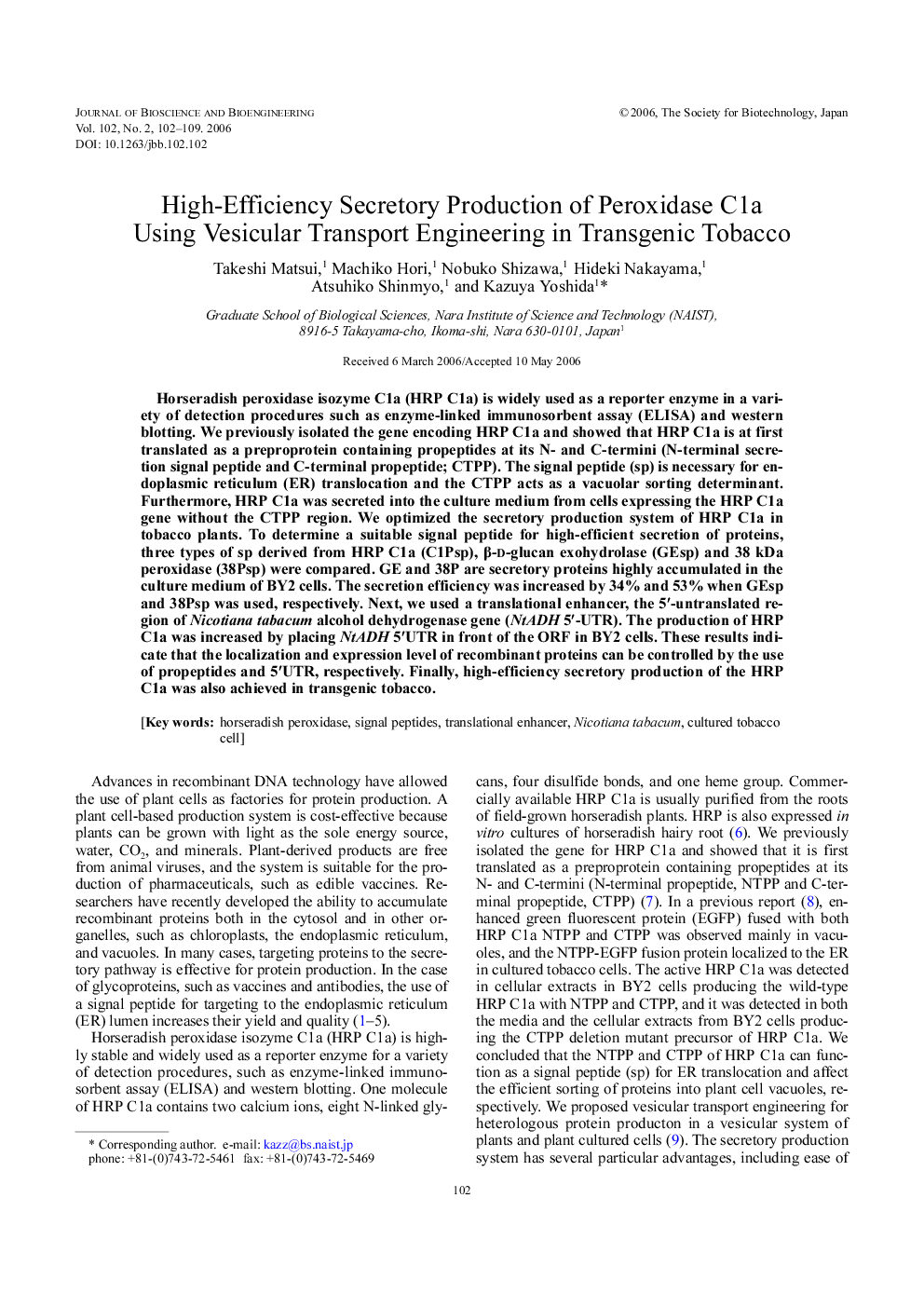| Article ID | Journal | Published Year | Pages | File Type |
|---|---|---|---|---|
| 22139 | Journal of Bioscience and Bioengineering | 2006 | 8 Pages |
Horseradish peroxidase isozyme C1a (HRP C1a) is widely used as a reporter enzyme in a variety of detection procedures such as enzyme-linked immunosorbent assay (ELISA) and western blotting. We previously isolated the gene encoding HRP C1a and showed that HRP C1a is at first translated as a preproprotein containing propeptides at its N- and C-termini (N-terminal secretion signal peptide and C-terminal propeptide; CTPP). The signal peptide (sp) is necessary for endoplasmic reticulum (ER) translocation and the CTPP acts as a vacuolar sorting determinant. Furthermore, HRP C1a was secreted into the culture medium from cells expressing the HRP C1a gene without the CTPP region. We optimized the secretory production system of HRP C1a in tobacco plants. To determine a suitable signal peptide for high-efficient secretion of proteins, three types of sp derived from HRP C1a (C1Psp), β-d-glucan exohydrolase (GEsp) and 38 kDa peroxidase (38Psp) were compared. GE and 38P are secretory proteins highly accumulated in the culture medium of BY2 cells. The secretion efficiency was increased by 34% and 53% when GEsp and 38Psp was used, respectively. Next, we used a translational enhancer, the 5′-untranslated region of Nicotiana tabacum alcohol dehydrogenase gene (NtADH 5′-UTR). The production of HRP C1a was increased by placing NtADH 5′UTR in front of the ORF in BY2 cells. These results indicate that the localization and expression level of recombinant proteins can be controlled by the use of propeptides and 5′UTR, respectively. Finally, high-efficiency secretory production of the HRP C1a was also achieved in transgenic tobacco.
